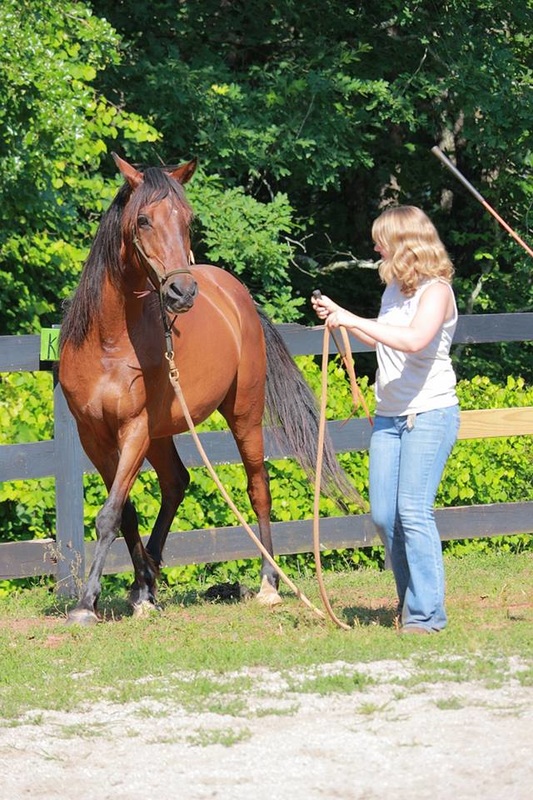
Cracker Horse
The Cracker horse is the oldest breed of horses in Florida. The Spanish brought horses over to Florida in the 1500’s by Ponce de Leon. These horses were known for their gait and also for agility and speed. The Cracker Horse is 13.2 to 15.2 hands and weights anywhere from 700 to 1000 pounds. As time progressed the Cracker horses were used to herd cattle. Florida cowmen were given the name ‘’Crackers’’ because of the sound of their cow whip and their horses were also given the name for herding cattle. The Cracker horse has a variety of names the Chicksaw pony, Marsh tackie, Florida cow pony and Grass Gut. Florida cracker horse are also willing workers showing spirit, amazing stamina and endurance. They are used for trial riding, team roping and pulling wagons. Cracker horses were great at herding smaller cattle but when it came to the big western cattle they were having trouble. Then that’s when the Quarter horse was brought in and the Cracker horse almost became extinct. But there was a few families the kept breeding the Cracker horse which kept the Cracker horses alive. In 1989 the Florida Cracker Horse Association was established with 31 Cracker horses registered. Today there are over a thousand registered. Every year in February the Cracker horses participate in what is known as the Cracker Trail Ride. This trail ride is 110 miles across the Florida terrain this last for a week. Other horses come from Kentucky and Tennessee to participate in this event and cannot keep up with the Cracker horses. The Cracker horse may be small, but their endurance can last more than other horses.
The Cracker horse is the oldest breed of horses in Florida. The Spanish brought horses over to Florida in the 1500’s by Ponce de Leon. These horses were known for their gait and also for agility and speed. The Cracker Horse is 13.2 to 15.2 hands and weights anywhere from 700 to 1000 pounds. As time progressed the Cracker horses were used to herd cattle. Florida cowmen were given the name ‘’Crackers’’ because of the sound of their cow whip and their horses were also given the name for herding cattle. The Cracker horse has a variety of names the Chicksaw pony, Marsh tackie, Florida cow pony and Grass Gut. Florida cracker horse are also willing workers showing spirit, amazing stamina and endurance. They are used for trial riding, team roping and pulling wagons. Cracker horses were great at herding smaller cattle but when it came to the big western cattle they were having trouble. Then that’s when the Quarter horse was brought in and the Cracker horse almost became extinct. But there was a few families the kept breeding the Cracker horse which kept the Cracker horses alive. In 1989 the Florida Cracker Horse Association was established with 31 Cracker horses registered. Today there are over a thousand registered. Every year in February the Cracker horses participate in what is known as the Cracker Trail Ride. This trail ride is 110 miles across the Florida terrain this last for a week. Other horses come from Kentucky and Tennessee to participate in this event and cannot keep up with the Cracker horses. The Cracker horse may be small, but their endurance can last more than other horses.
Hawaii’s Donkeys
On Hawaii’s Big Island lives a population of about 400-600 feral Donkeys, locally called “Kona nightingales”. That is about 6 Donkeys for every square mile. They were brought to the island in 1825 to be used as pack animals on farms, sugar and coffee plantations. When you drive around the island there are donkey crossing signs and you can sometimes see them roaming about. However because of a bad drought season the donkeys started to wander into people’s backyards looking for food and water. This was a big problem because of their excessive numbers.
The Donkeys have been found drinking out of people’s swimming pools. They’ve been found eating grass at schools and other public places. They were crossing highways causing hazards for people and themselves. The island cannot support their numbers because their population has not been kept in check.
In 2010 the Hawaiian government rounded up most the donkeys and sent a portion of them to the mainland. Those that made the 2,500 mile trip landed in Peaceful Valley Donkey Rescue in California. They plan to re-home all of the donkeys. The end goal in Hawaii is to create a local sanctuary for the wild herd, giving the beloved donkeys a safe permanent home and help control the population.
On Hawaii’s Big Island lives a population of about 400-600 feral Donkeys, locally called “Kona nightingales”. That is about 6 Donkeys for every square mile. They were brought to the island in 1825 to be used as pack animals on farms, sugar and coffee plantations. When you drive around the island there are donkey crossing signs and you can sometimes see them roaming about. However because of a bad drought season the donkeys started to wander into people’s backyards looking for food and water. This was a big problem because of their excessive numbers.
The Donkeys have been found drinking out of people’s swimming pools. They’ve been found eating grass at schools and other public places. They were crossing highways causing hazards for people and themselves. The island cannot support their numbers because their population has not been kept in check.
In 2010 the Hawaiian government rounded up most the donkeys and sent a portion of them to the mainland. Those that made the 2,500 mile trip landed in Peaceful Valley Donkey Rescue in California. They plan to re-home all of the donkeys. The end goal in Hawaii is to create a local sanctuary for the wild herd, giving the beloved donkeys a safe permanent home and help control the population.










 RSS Feed
RSS Feed


















